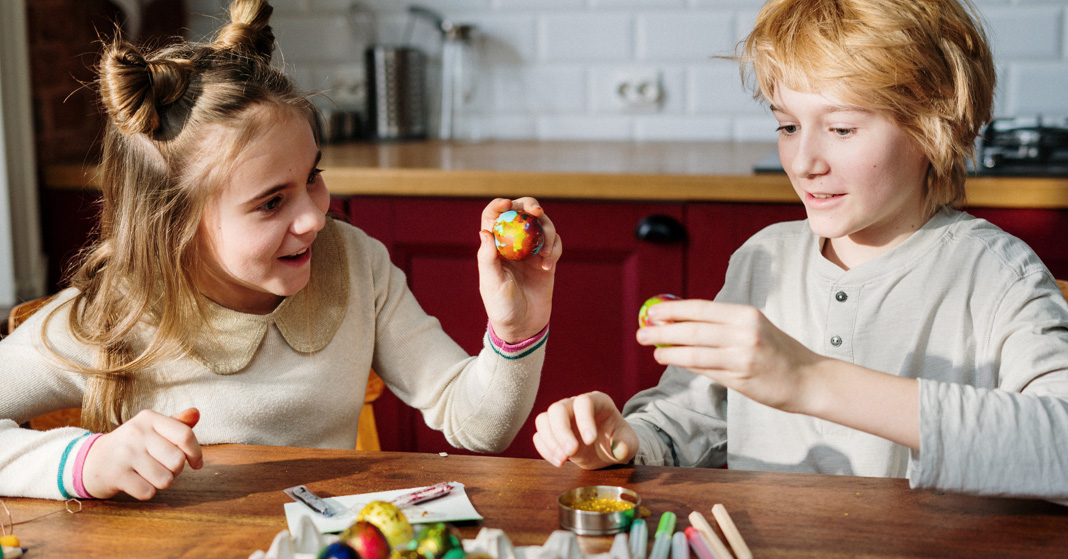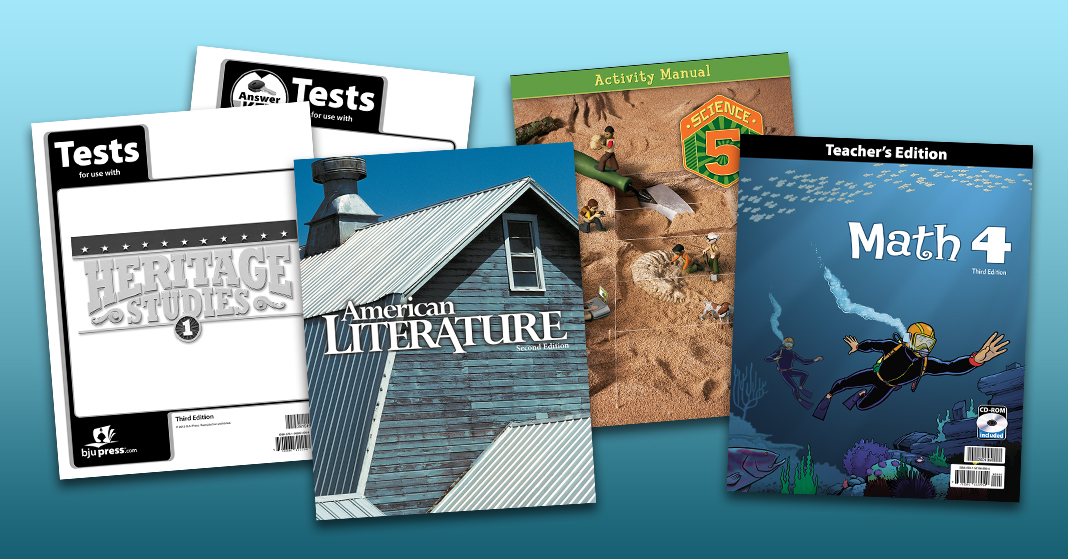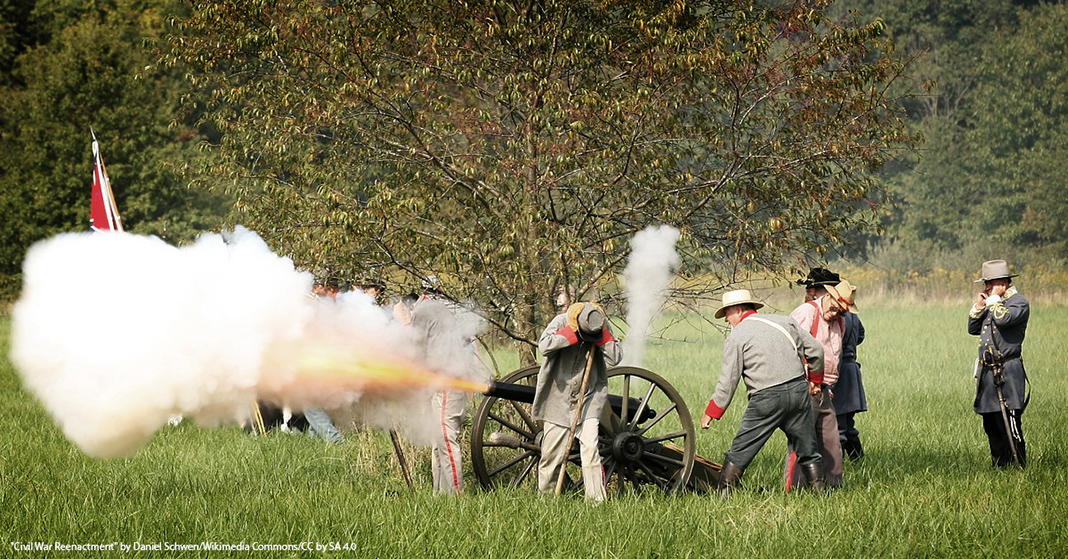
What’s not to love about fall? Cooler weather, colorful leaves, apples, and pumpkins are the perfect inspiration for harvest-themed homeschool activities you can enjoy with your family. It’s an ideal season for both indoor and outdoor creativity, so here are just a few ideas to jumpstart your fall plans.
activities
Resources for Homeschool Projects

Projects, activities, and labs all play an important role in homeschooling. Sometimes we use them to help us assess whether or not our child truly understands a concept. And sometimes we use them to build a deeper understanding about a concept. But homeschool projects can be challenging, because, in order to do them, we have to have the right materials. That means that we have to plan ahead to make sure that I have everything we need. And sometimes getting those materials can be difficult and expensive. If you are like me and have multiple school-aged children, you may be tempted to skip those projects all together. [Read more…] about Resources for Homeschool Projects
Homeschool Curriculum: Going Beyond the Books

What are all these books even for?
Have you ever caught yourself thinking that as you unpack your boxes full of homeschool curriculum for the year? Especially if you’re teaching the material yourself, there’s a lot of stuff in those boxes. Mixed in with the excitement for the coming homeschool year, you might find yourself asking, “Do I really need all this? What do these books do?”
Teacher Edition
If you really want to teach your children yourself, you need something that’s more than a glorified answer key. A good teacher edition will give you valuable resources that equip you to teach each lesson in a way that enables your children to understand the content.
You don’t have to be a subject expert to teach your children. And, as a parent, you’re probably already an expert or becoming an expert on how your children learn. What you need in your homeschool curriculum is a resource that equips you to create a learning experience that your child needs—without long, fruitless Pinterest searches.
BJU Press teacher editions offer strategies for presenting the content in ways that will bring children into the lesson. Those strategies may use hands-on learning, visual learning, discussions, or even storytelling. For example, you don’t have to go find resources for your study of light in Science 4. The Science 4 teacher edition offers additional resources for you, including directions for creating a shadow box theater or a kaleidoscope.
To get your children really thinking about what they’re reading, you need to ask questions. But what kind of questions? Which ones will get your kids really thinking about the content? Discussion questions and worldview development strands that you can choose from get your children thinking about the content. Additionally, they help them know how to think about it from a biblical worldview.
Besides teaching strategies and discussion questions, teacher editions also include lesson guides, background information, rubrics, answers, lesson plan overviews, and suggested schedules for the year. A teacher edition is truly a teaching resource.
Student Edition
The student edition or student worktext will be the most familiar piece. You might think of it as the core of your homeschool curriculum. It’s the book your children go to every day—or most days, depending on your schedule—to read lessons and complete assignments. Some textbooks may give you flashbacks to your high school days or make your homeschool feel like you’re just doing “school at home,” but a good textbook goes beyond the stereotype.
Textbook material will often be the first informational texts that your children read. Reading informational texts is an important skill for kids to develop because they will be reading and interacting with informational texts throughout their school days and as adults. When was the last time you read an instruction booklet, a news blog, or a how-to article? What about a devotional book or a sermon transcript? Even this post is an informational text. Information is all around us, and children need to learn how to read it, think about it, and respond to it appropriately. That’s why every BJU Press textbook is designed to help students as they work with informational texts.
Activities
An activities book seems kind of self-explanatory, doesn’t it? It’s a book full of activities. But what do those activities do? Many of them will be simple exercises that require just the book and a pen or pencil. Even though these activities seem simple, they give your kids a chance to review what they’ve learned so that they can develop mastery with the content. Other activities, especially in science, will be important for approaching the content in a different way. Not all children learn the same way, and your children may need to receive different kinds of information in different ways. So BJU Press activities also give your children the opportunity to draw pictures or diagrams of the content, to create models of it, to act it out, and so forth.
Assessments
Tests may be the bane of most students’ existence, but they do serve the vital function of giving you a way to evaluate whether your children are learning the skills they’re supposed to be learning. You may not plan on keeping track of all their scores, especially if you don’t have to submit grades to your state or a homeschool organization. But even if you don’t use the grades—because the numbers don’t really matter anyway—you can still use the information. Are your children showing that they can comprehend what they’re reading? Are they able to use reasoning skills as they answer questions? Can they think critically about the information? Are they drawing valid conclusions about it? Your children aren’t so much acing or failing tests as they are showing successes or weaknesses in their learning.
Do you know what all these homeschool curriculum pieces have in common? They’re all designed to do exactly the thing you want to do in your homeschool—teach. They give you manageable lessons so that you don’t have to go looking for lessons or create your own. Learn more about our textbook kits to find the perfect fit for your family!
What Is STEM and How Do I Teach It?

If you’re like me, you have a hard time keeping up with all the new buzzwords in education. When you hear about STEM, it’s usually being talked about as if it’s a subject all its own—one more thing you need to worry about teaching your kids. The reality is that you’re probably already teaching it, especially if you are using BJU Press textbooks for science and math. We were doing STEM long before it was called STEM.
What STEM Is
STEM is an acronym for
- Science
- Technology
- Engineering
- Math
Technically, any lesson that falls into one of these subject areas is a “STEM lesson.” But the term is typically used when describing activities that seek to teach kids how to apply those subjects to real-world applications. If hearing about STEM brings to mind pictures of kids building robots, that’s because robotics and programming are examples of real-world applications. They are definitely STEM, but STEM isn’t limited to electronics. Exercises can also include chemistry experiments, math equations used to design buildings or vehicles, weather analysis, and more.
Why It’s Hot
The acronym actually dates back to 1998 but has recently gained a lot of popularity. Experts in the United States determined that we were behind other countries in these areas in terms of test scores and the number of college graduates holding degrees in those fields. The majority of high-paying new jobs fall into the STEM category, and there aren’t enough graduates to meet that demand.
Why It Matters
Homeschoolers usually aren’t big on educational fads, focusing instead on time-tested approaches that we know work. The acronym STEM might be trendy but the idea isn’t new. The fundamental processes used in math and science never change, but the way we apply them to the real world has to because the demands of the job market change. If we’re going to bring up our children to be good stewards of God’s creation and to love their neighbors, we have to equip them with the tools they need to accomplish those things in a modern world. That’s why BJU Press has been including these real-world applications in our science and math textbook lines from the beginning.
What to Do
One of the best things about homeschooling is that you can do what’s right for your family. I believe STEM is very important, so here are two things I plan to do with my own son:
- I’m going to make sure that the curriculum I’m using has plenty of up-to-date STEM exercises that will help him learn.
- I’m going to personally come at the activities with a learner’s attitude. A lot of the lessons, especially ones involving technology and programing might be foreign to parents who aren’t actively involved in fields that use them, but I’m excited about learning along with my son and certainly won’t skip over lessons that may seem unfamiliar or difficult. We’ll get through them together.
Did you find this post helpful? Would you like to share a STEM activity that has worked in your homeschool? Be sure to comment below! Also, to get you started, here are six free STEM activities from BJU Press science textbooks.
An Experience That Changed Everything

When I was about nine years old, my dad decided to take me to a local Civil War reenactment. I’m from a small town that’s famous for having one of the best reenactments around, drawing thousands of people every year. I loved history and had studied the Civil War, so my excitement for this trip rivaled that of going to Disney World.
I walked around taking it all in. Everything was just as I had read and expected it to be—men and women cooking over campfires next to their tents, sharing stories from the past; the sound of cannon blasts so loud that my ears hurt; soldiers in uncomfortable-looking uniforms carrying rifles with bayonets that made them taller than the men carrying them. It was all so epic.
Then I heard it. A man screaming in pain, or at least acting like it. I turned the corner and saw the medical tent. I froze. The pile of severed limbs covered in “blood” had probably been purchased from a novelty store, but they were all too real to my pre-adolescent eyes. A man in a once white, now crimson apron was wielding an instrument that looked a lot like my dad’s hacksaw. Then I noticed the “wounded” man surrounded by several other men holding him down. Young as I was, I could easily figure out what was going to happen next. The experience shocked me. What I had just witnessed was all I could think about for the rest of the day.
My entire understanding of the Civil War changed in an instant. It wasn’t as though I hadn’t read about the medical treatments of the time, but that was just words in a textbook that I quickly glossed over to get to the exciting battles. Now the realities of the war had become palpable for me.
Sometimes the only way to learn about something in a way that allows for true understanding is to experience it. In many cases, we think we (or our children) understand a topic only to find out that we really didn’t comprehend it at all. That’s why learning activities are so important. Actually experiencing something builds a foundation for learning that you can’t create by merely reading a book or watching a video. Not all activities and experiences need to be shocking like my example. In fact, most won’t be. But simple activities, such as this balloon craft, put skills taught in a lesson into a physical form and accomplish the same thing.
That’s why I always encourage homeschool parents to also purchase the Teacher Editions of BJU Press textbooks. Parents typically don’t have time to come up with creative activities to reinforce each lesson. The Teacher Editions make this simple by including a large variety of activities for different learning styles. The time you save in planning and the benefit to your child’s learning experience easily offset the extra expense.
Be sure to check out some learning activity ideas in the posts below.